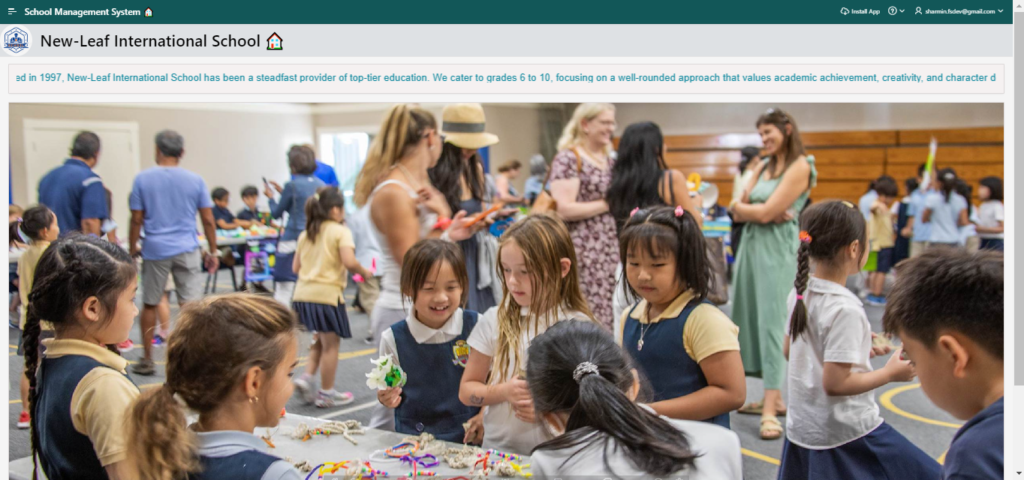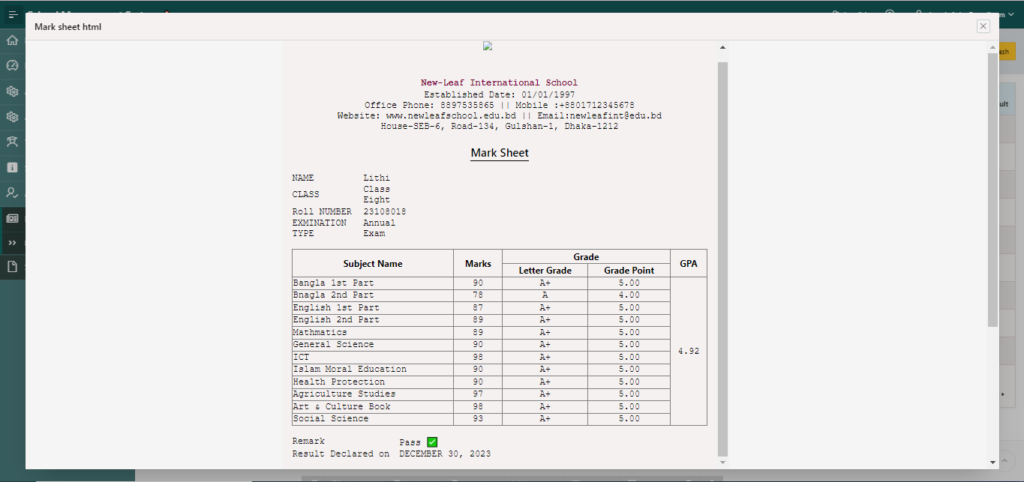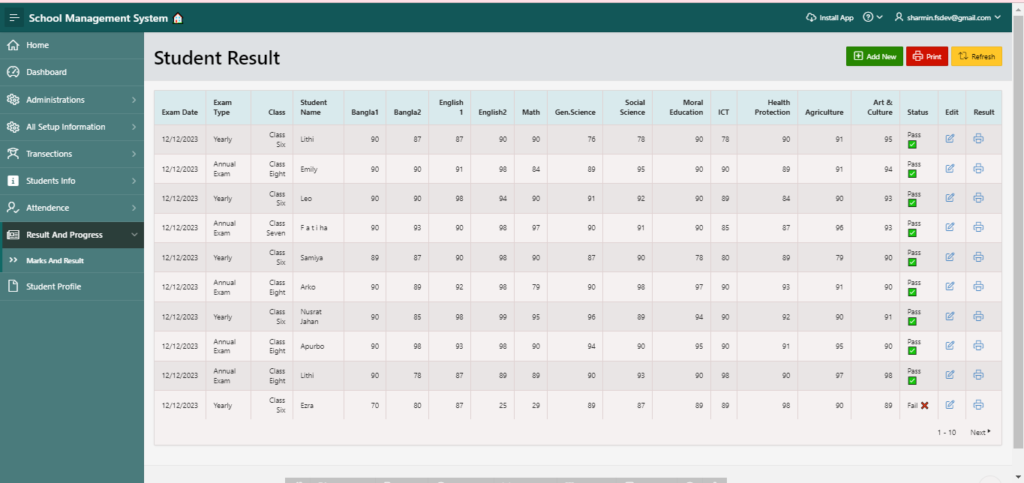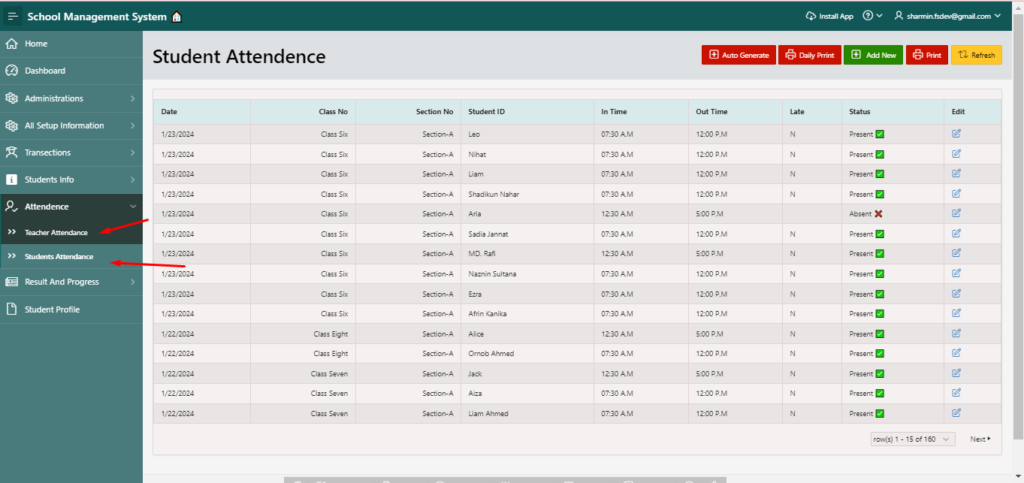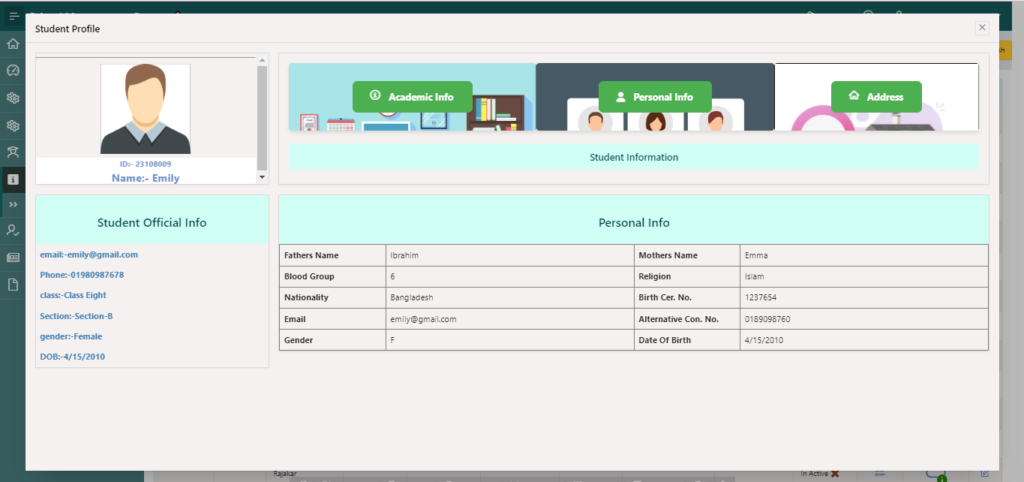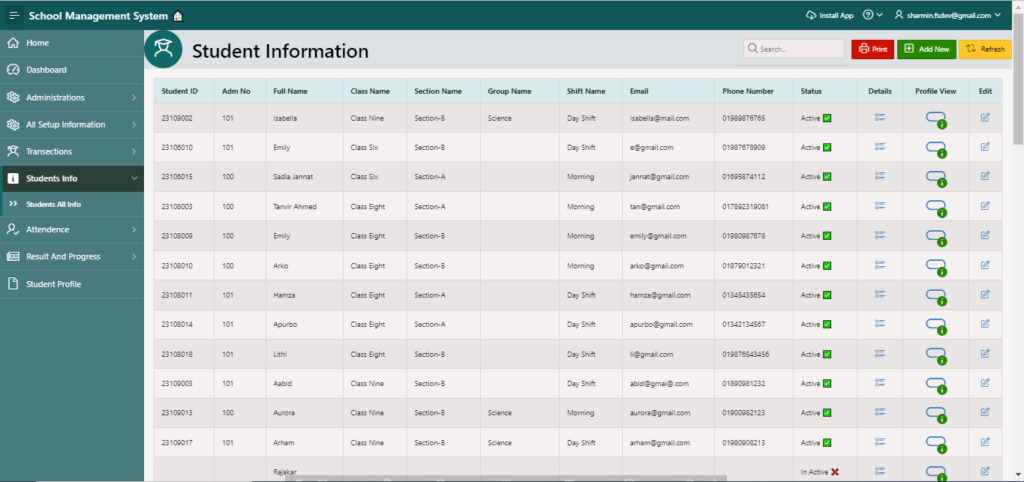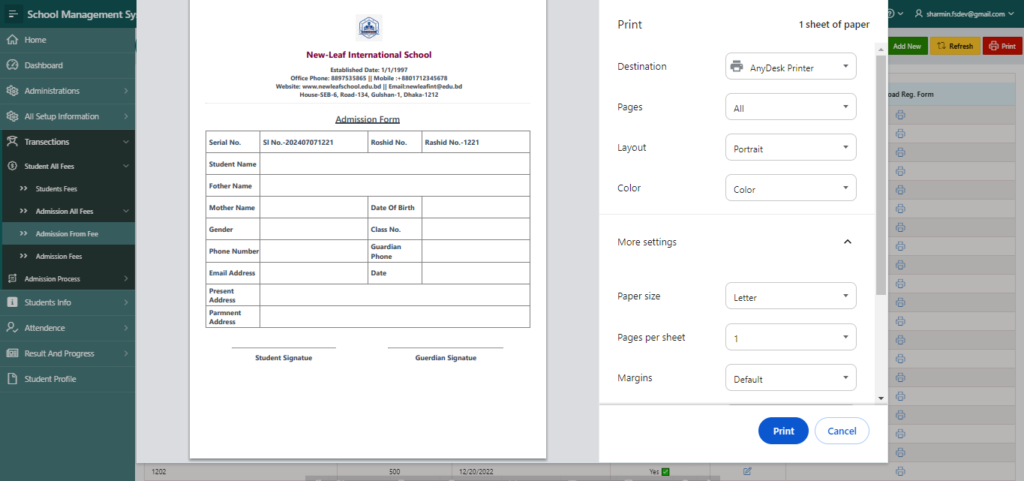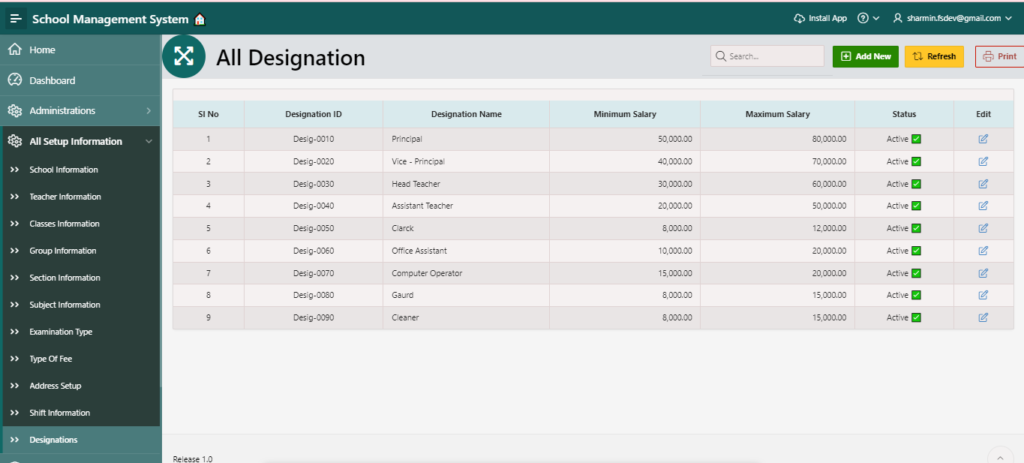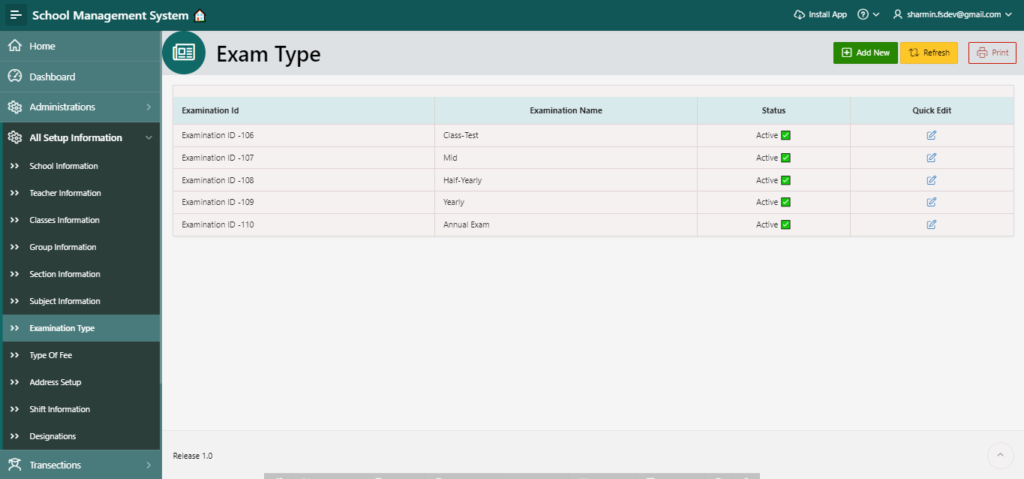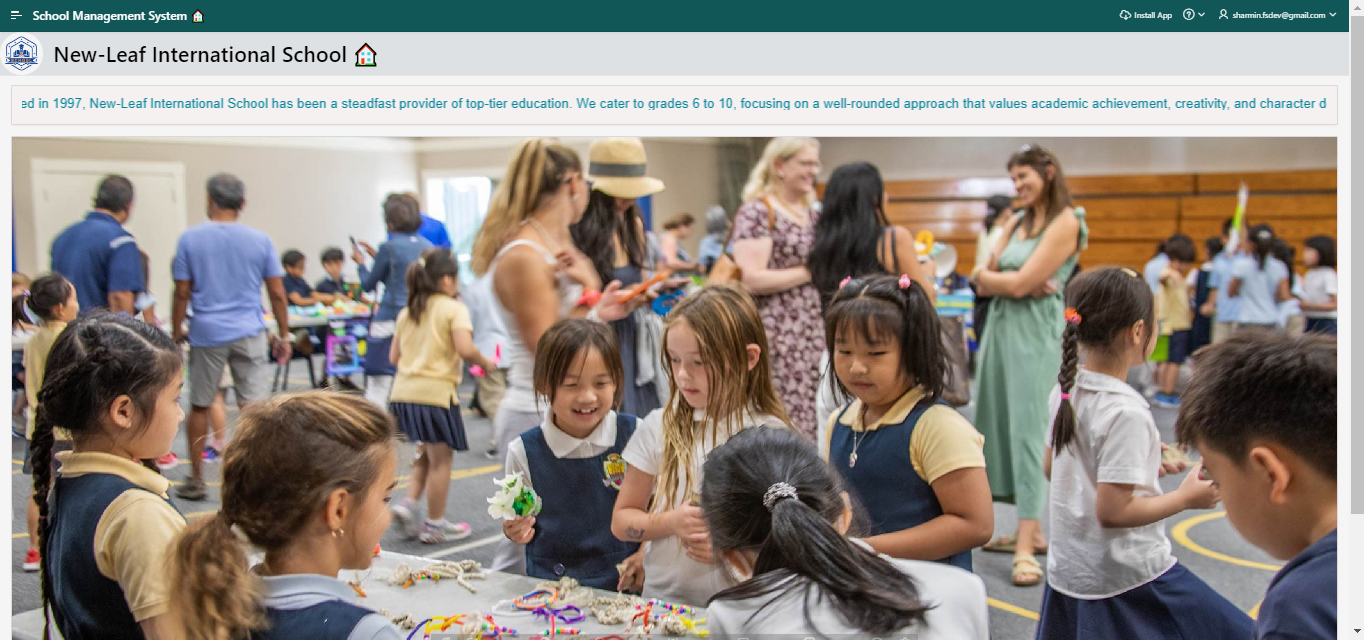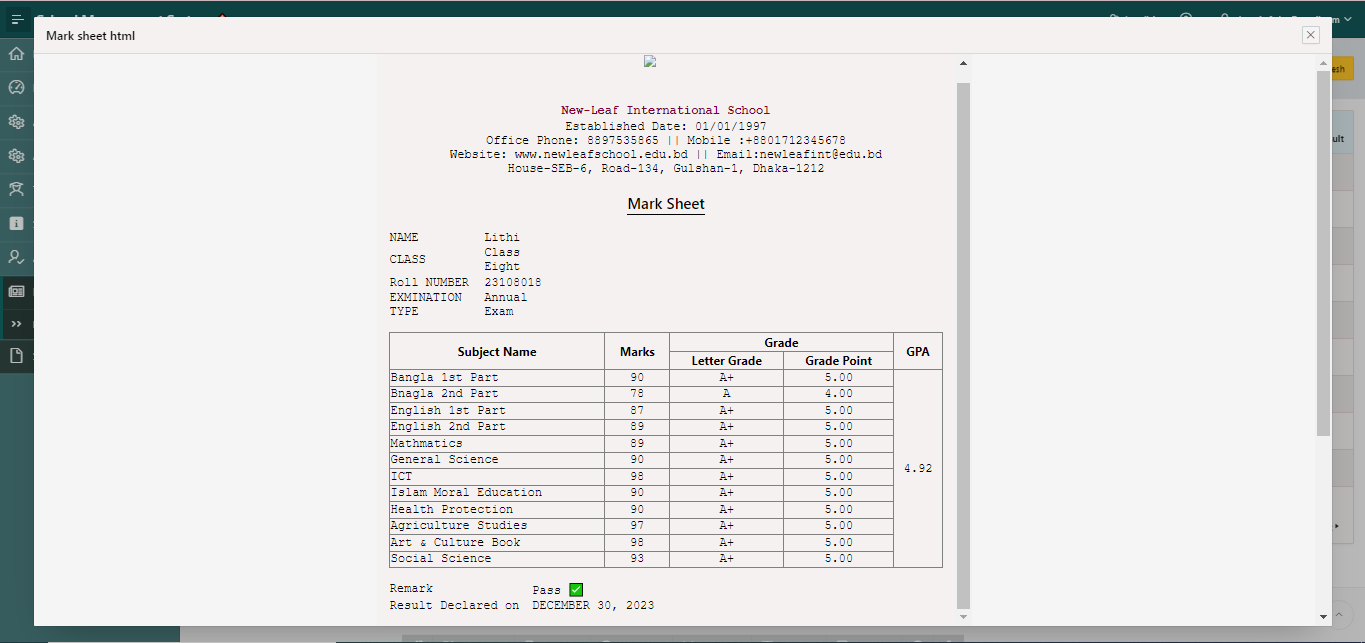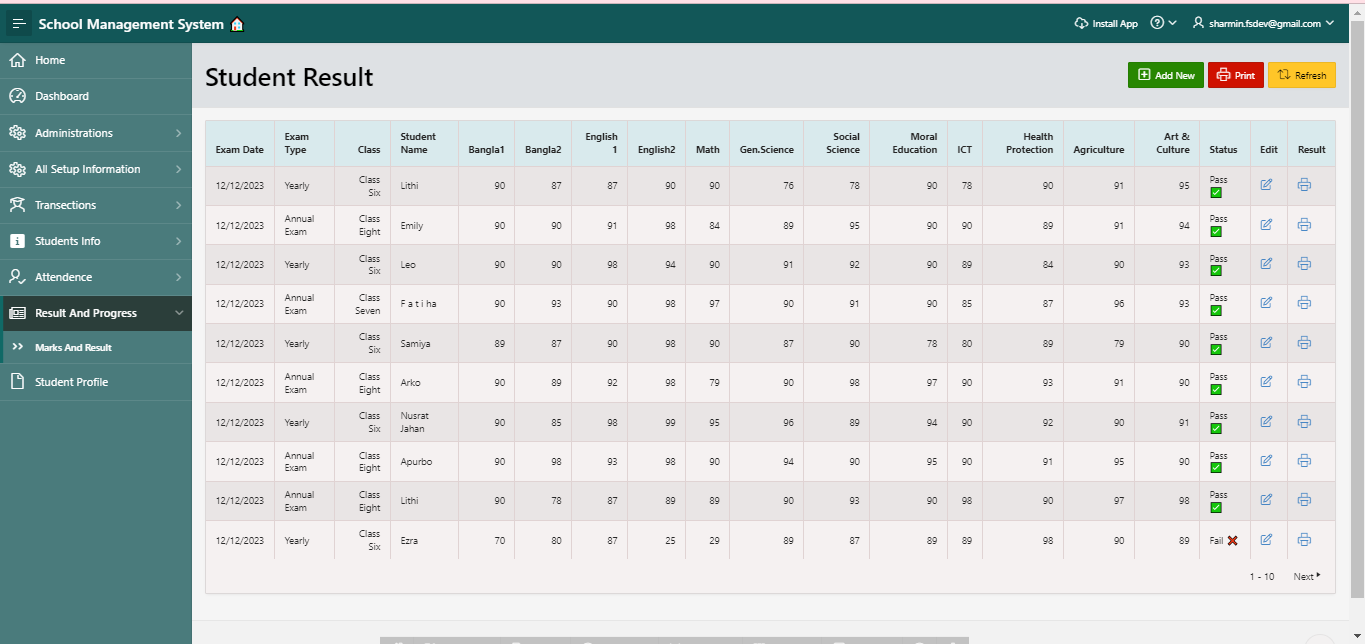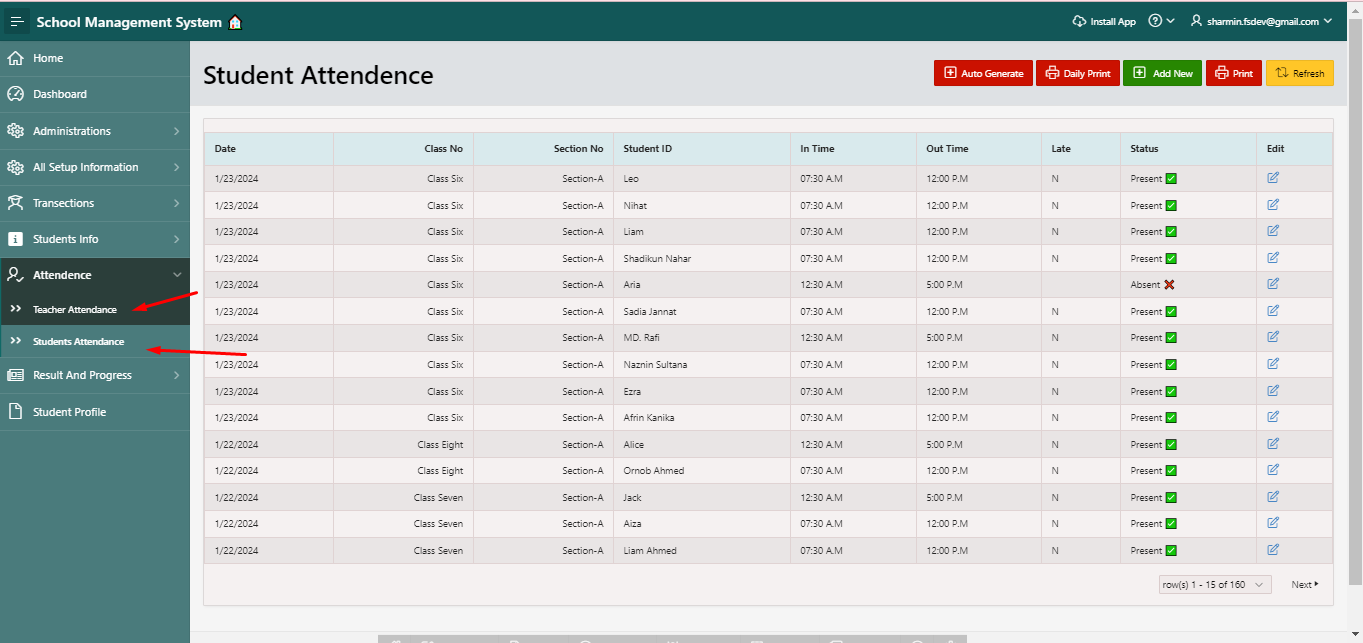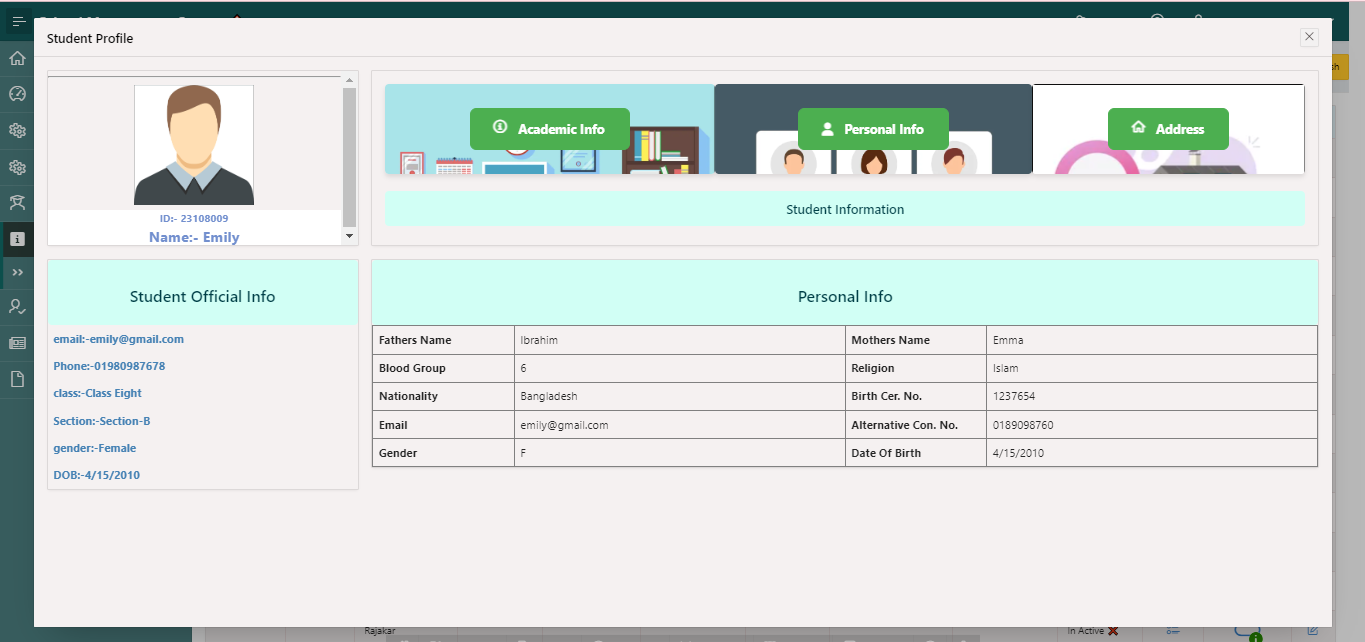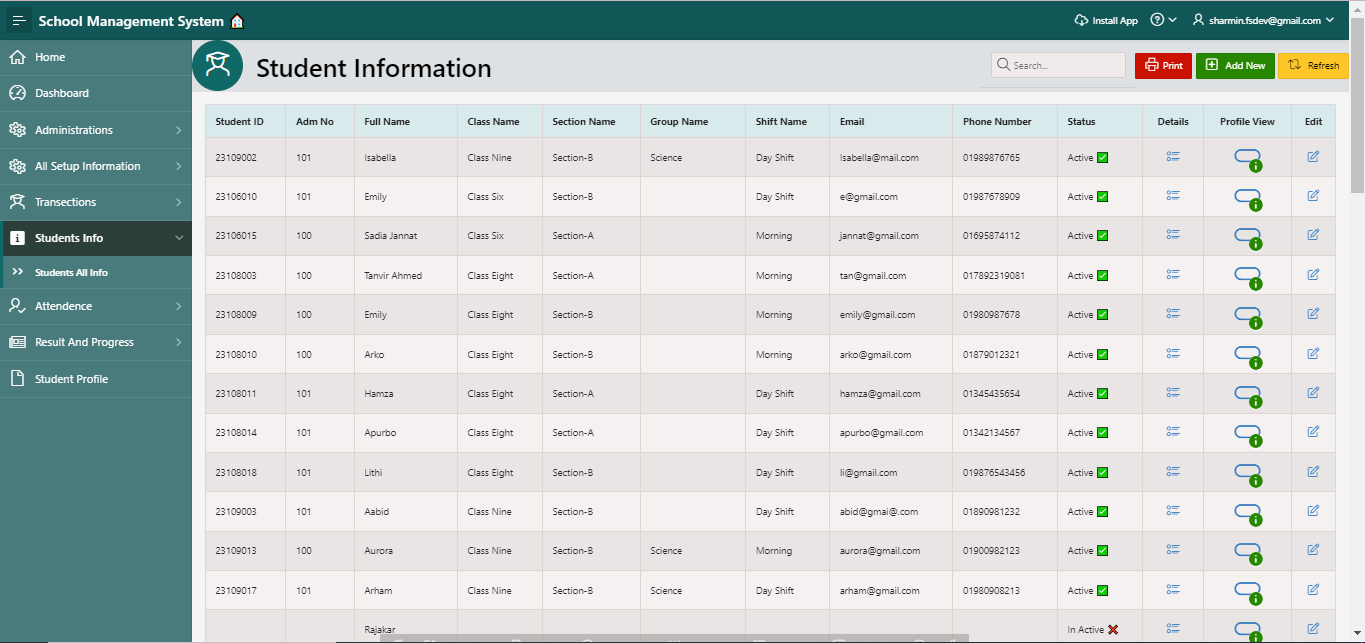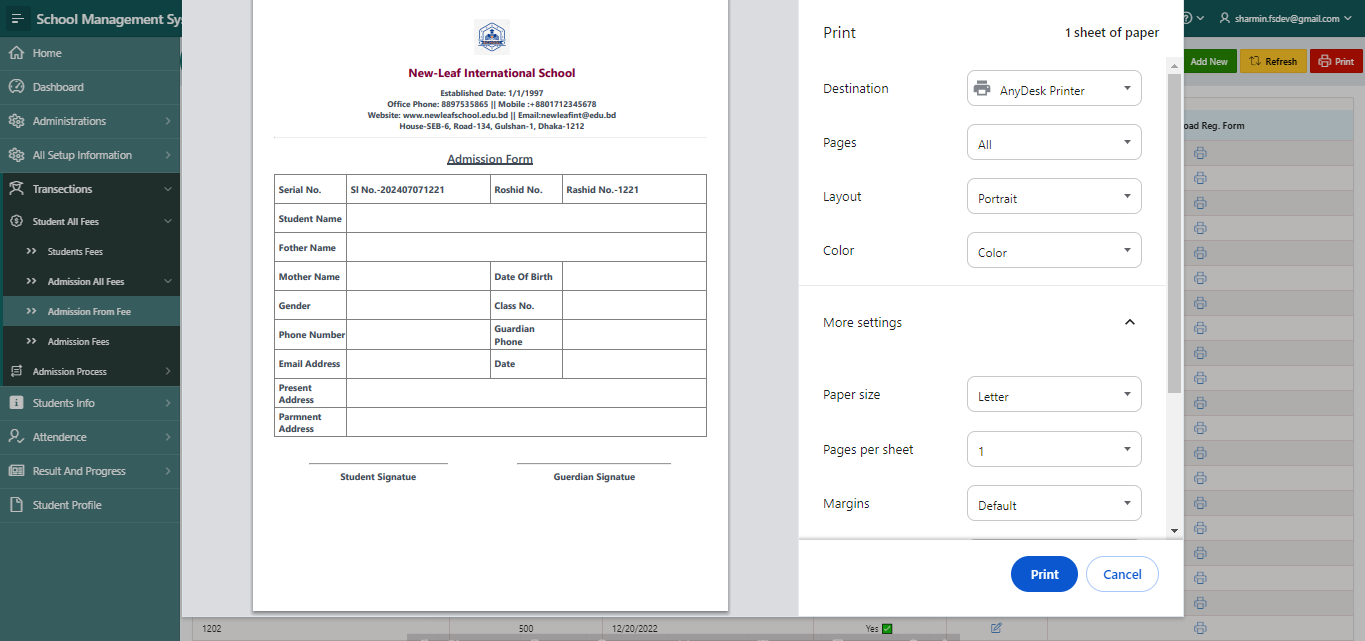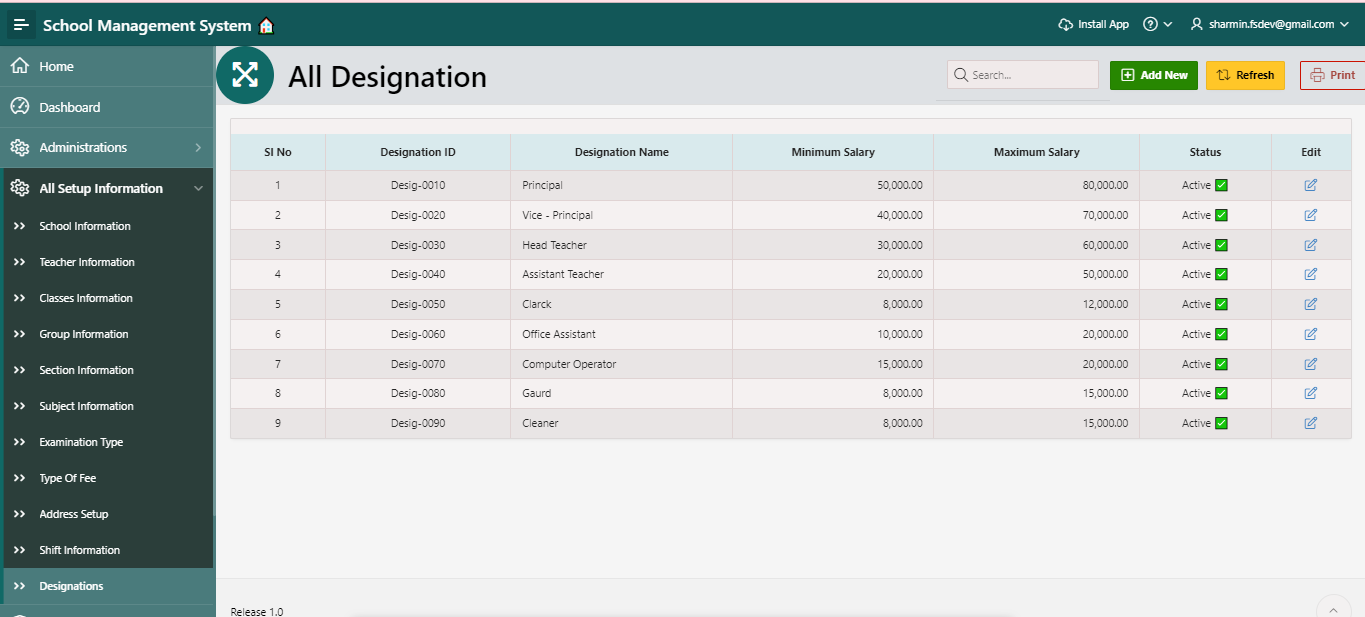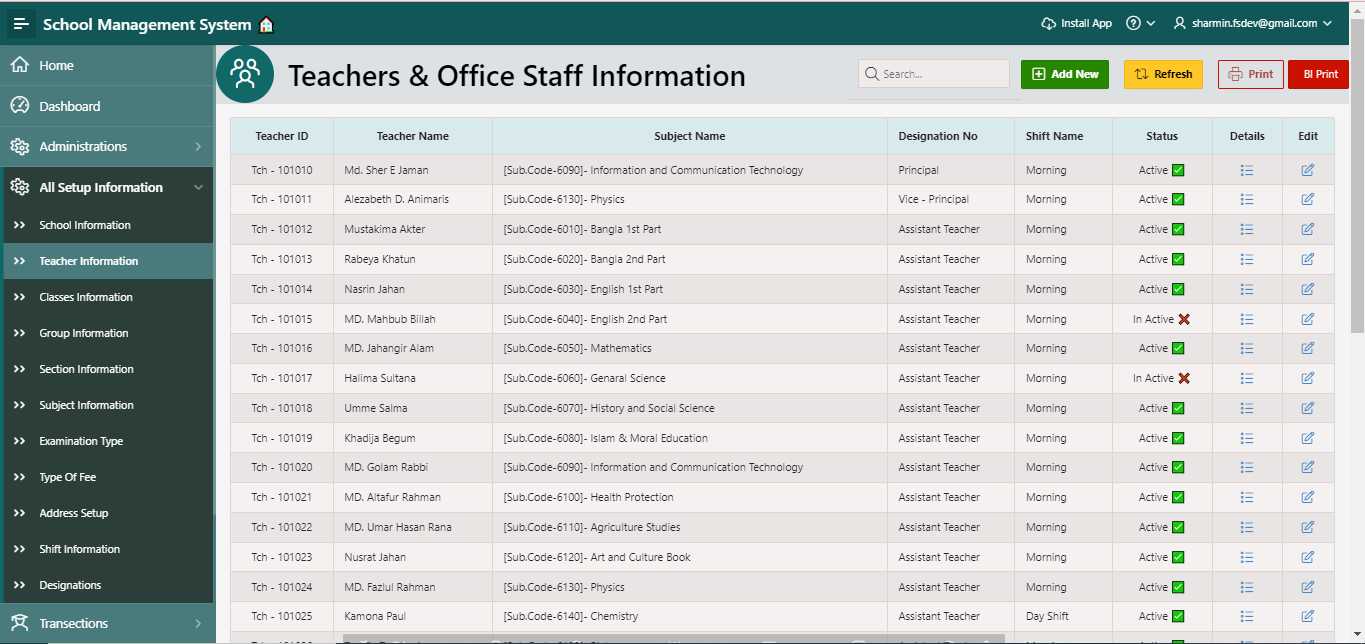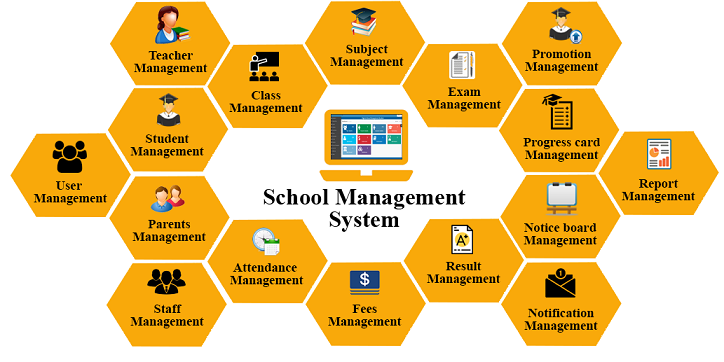A School Management System (SMS) is designed to streamline the administrative, academic, and financial operations of educational institutions. Here are the key features of a comprehensive School Management System:
1. Student Information Management
- Student Database: Centralized storage of student records, including personal details, academic history, attendance, and behavior reports.
- Document Management: Secure storage and retrieval of important student documents such as admission forms, ID proofs, and certificates.
2. Admissions and Enrollment
- Online Applications: Manage online admission applications, track their status, and communicate with applicants.
- Enrollment Management: Handle student enrollment processes, including class assignments and fee payments.
3. Attendance and Timetable Management
- Attendance Tracking: Record and monitor student and staff attendance using manual or biometric systems.
- Timetable Scheduling: Create and manage class schedules, allocate teachers, and optimize classroom usage.
4. Examination and Assessment Management
- Exam Scheduling: Plan and schedule exams, manage seating arrangements, and allocate invigilators.
- Gradebook: Record and calculate student grades, generate report cards, and analyze academic performance.
5. Fee and Financial Management
- Fee Collection: Automate fee collection, generate invoices, and manage receipts.
- Financial Reporting: Track expenses, manage budgets, and generate financial reports for transparency and planning.
6. Library Management
- Catalog Management: Maintain an organized catalog of books, journals, and other resources.
- Lending System: Track book issues, returns, and overdue items.
7. Communication and Collaboration
- Parent-Teacher Communication: Facilitate direct communication between parents and teachers through messages and notifications.
- Announcements: Share important announcements and updates with students, parents, and staff via SMS, email, or in-app notifications.
8. Transport Management
- Bus Scheduling: Plan and manage school bus routes, stops, and timings.
- Tracking: Real-time tracking of school buses to ensure student safety.
9. Hostel Management
- Room Allocation: Manage room assignments for students and staff in hostels.
- Maintenance Requests: Handle maintenance requests and track their resolution.
10. Human Resource Management
- Staff Records: Maintain detailed records of teaching and non-teaching staff, including personal information, qualifications, and experience.
- Payroll Management: Automate payroll processing, including salary calculations, deductions, and disbursements.
11. Curriculum and Lesson Planning
- Curriculum Management: Organize and manage the curriculum, syllabi, and lesson plans for different classes and subjects.
- Lesson Planning: Allow teachers to create, share, and collaborate on lesson plans.
12. Student and Staff Portal
- Student Portal: Provide students with access to their academic records, assignments, timetables, and communication tools.
- Staff Portal: Allow teachers and administrative staff to access their schedules, manage attendance, and communicate with parents and students.
13. Parent Portal
- Parent Access: Enable parents to track their child’s academic progress, attendance, and receive updates from the school.
- Fee Payment: Allow parents to pay school fees online and access payment history.
14. Analytics and Reporting
- Academic Analytics: Analyze student performance data to identify trends and areas for improvement.
- Administrative Reports: Generate reports on attendance, fee collection, staff performance, and other administrative metrics.
15. Security and Data Privacy
- Data Security: Implement robust security measures to protect student and staff data.
- Privacy Compliance: Ensure compliance with data privacy regulations to safeguard personal information.
16. Integration Capabilities
- Third-Party Integration: Seamlessly integrate with other educational tools and platforms, such as Learning Management Systems (LMS), ERP, and communication tools.
- API Support: Provide APIs for custom integrations and data exchange with other systems.
A well-designed School Management System with these features can significantly enhance the efficiency, transparency, and overall management of educational institutions, ultimately leading to a better learning environment for students and a more organized administration.
